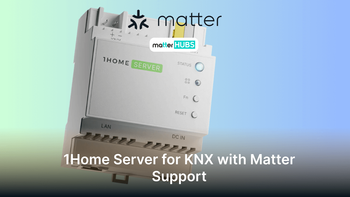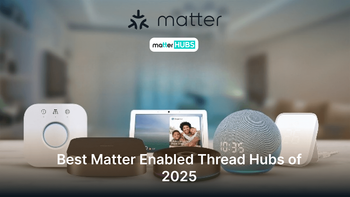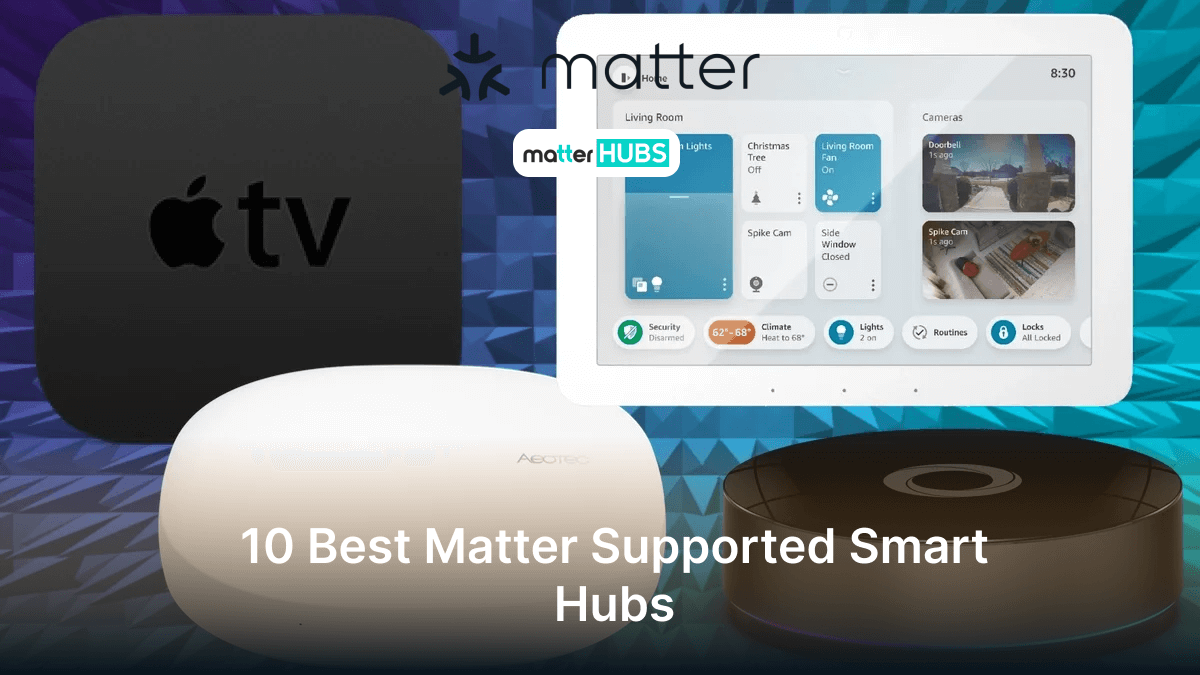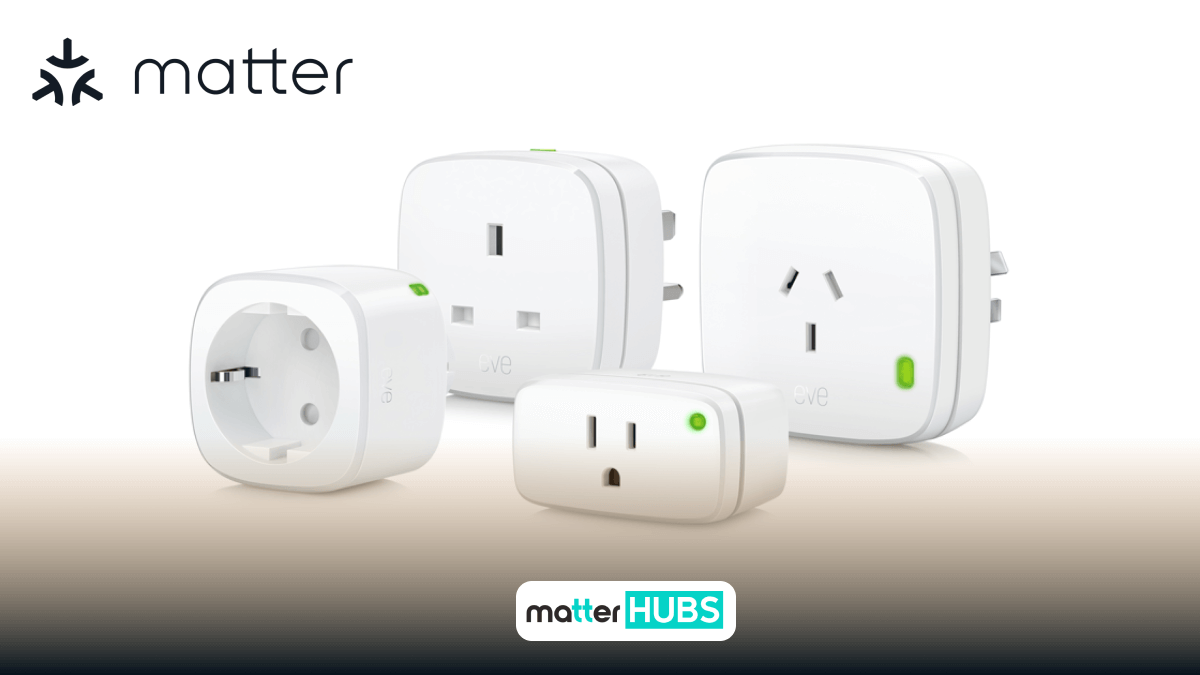
How to set up a smart home with Matter
a year ago • 6 min read

Have you ever wondered how to turn your home into a smart home Without handling multiple apps and hubs? Discover the secret to effortless smart home integration with Matter!
A matter smart home can control them with just one app or voice command. You need to purchase matter support devices and connect them to your home network to set up a matter home.
But how easy is it to set up a smart home matter? Here are the steps on how to set up a matter smart home.
What is Matter, and How Does It Help Create Matter Home Automation?
Matter is a next-generation smart home platform that connects devices using Internet Protocol (IP) networking. Matter protocol creates a standard language that allows smart home platforms (Amazon Alexa, Apple HomeKit, Google Assistant, Samsung SmartThings) to work together and share control of your devices.
1. Choose Your Matter platform
Here, the first thing you need to do is to choose a matter platform. There are several smart home solutions that support the Matter Standard and can control devices.
- Amazon Alexa with the app of the same name and voice control.
- Apple Home as a progression of the former HomeKit system.
- Google Home, which combines Nest products from Google with Matter.
- SmartThings from Samsung with its own product range.
Home Assistant is also available as open-source software for DIY solutions. Additionally, there are smart home hubs like the Homey Pro that are also integrated and can be used for control. They act as intermediaries.
Require a Hardware Option
One factor you need here is the required hardware. You know! Almost every platform relies on certain products to control the smart home. For example, "Apple Home" can only be started with an iPhone or iPad. Additionally, an Apple Hub must be installed as a Matter Controller.
Amazon Alexa requires a compatible Echo model and Google and SmartThings also use their own hubs. In the case of a Home Assistant, a computer running the software will assist you in performing this task.
If you already have a matter enabled device in your home, this control center also suggests using the related ecosystem for matter. You can even have Matter Zigbee Hubs to set up a great home automation.
Using the Matter Controller
The hub together with the associated app, you can set up new matter enabled device and adds them to the secure installation. It establishes a local connection to matter devices. This type of control is provided for standard. It ensures that the hub and the end device communicate directly with each other - without connecting to the Internet.
2. Connect Your Devices to Your Home Network
After picking out your devices, you'll need to connect them to your home network. Just follow the setup instructions that came with your matter devices. The great thing about Matter is how easy it makes this process, so it should not be a big problem for you.
3. Download an App
After connecting your matter supported devices, you'll need to download an app to manage them. For iOS devices, use the Apple Home app, which is usually pre-installed. If you’ve removed it, you can reinstall it from the App Store.
For Android devices, use the Google Home app, available on the Play Store if you need to reinstall it.
Once you've downloaded the app, create an account and sign in to start managing your Matter devices.
Do you want to know about comcast new Wi-Fi router? Check out Comcast’s new router includes Wi-Fi 6E, Zigbee, and Matter.
4. Add Your Devices to The App
After signing in, you can add your devices to the app.
For that just follow the on-screen instructions, and the app will guide you through the process.
Want to smarten up your smart home with the 1Home Server KNX. Check out 1Home Server for KNX with Matter Support article.
Tips for Using a Matter Smart Home

- Use voice commands to control your matter devices
- Create scenes and automation
- Use geofencing to control your matter smarthome devices
- Monitor your home remotely
- Invite others to control your home
- Update your devices
You can control your matter smart home devices with voice commands through a voice assistant.
You can set up scenes and automation to manage your Matter smart home devices automatically.
You can control your matter smart device based on your location.
You can monitor your home from anywhere with matter home.
You can invite others to control your matter smart home.
Be sure to update your matter compatible devices regularly to keep them secure and to benefit from the latest bug fixes and improvements.
Matter Smart Lights
Currently, there are plenty of smart lights that support Matter. With Matter, you can connect all these lights on a single platform of your choice and without needing separate apps. You can control them with voice commands and get instant responses.
Here are the new smart lights supported by Matter,
- Aqara Matter lighting
- Philips Hue Matter lights
- Govee LED strip light
- Nanoleaf Matter light strip
- Nanoleaf Matter light bulbs (A19, BR30, GU10)
- Nanoleaf Matter essentials downlight
- Nanoleaf Skylight Lights
Matter Smart Plugs
Matter only supports the basic functions of these smart matter plugs. Here are the new smart plugs supported by Matter,
- Meross Matter smart Wifi plug mini
- Meross Matter smart Wifi plug with energy monitor
- Leviton Decora WiFi smart plug
- Eve Energy Matter smart plug
- Tapo Mini Plug
Matter Thermostats
Currently, there are only a few Matter thermostats in the market. The Matter Nest Thermostat is the only one available in the US market. Matter supports most of the functions you need to control these devices.
- Google Nest thermostat
- Aqara radiator thermostat
- Eve thermo radiator valve and control
- Ecobee thermostat
Not only these products, now you can enhance your apple homekit matter experience with tuya matter, zigbee matter, nanoleaf matter, ikea matter, tapo matter, aqara matter, govee matter devices.
Conclusion
As mentioned earlier; by following these steps you should be able to set up a smart home that leverages Matter's interactivity and ease of use. It helps make your Smart home experience more enjoyable.
Every smart home enthusiast dream of creating the perfect system. one that instantly understands and responds to their needs. With this effort, many smart home brands have come forward to bring out the best of Matter integration.
FAQs
Not yet. Since Amazon, Ring’s parent company, is a major supporter of the Matter standard, it’s likely that Ring devices will eventually support Matter. However, Matter 1.0 doesn't include support for security cameras, so you’ll have to wait a bit longer for Ring cameras and video doorbells to be compatible. In the meantime, non-camera Ring products should work with Matter 1.0 once they’re certified.
Wyze is a member of the Connectivity Standards Alliance (CSA) that governs the Matter standard. It's unlikely to update existing products with Matter support but intends to release Matter-compatible products in the future. Since Matter 1.0 lacks support for security cameras, we don't expect to see any Matter-compatible Wyze cameras anytime soon.
Matter won’t replace existing smart home protocols but will enhance their interoperability. You’ll still encounter new devices using protocols like Wi-Fi, Z-Wave, Thread, Zigbee, and Bluetooth. The key difference is that these products might now come with Matter certification, ensuring they can communicate with each other if there's a Matter controller or Thread border router in place.
Matter is a local connectivity technology, so Matter-only devices require an internet-connected controller — such as those built into smart speakers and smart home hubs to be present in the home to enable control when away from the home.
Spread the word

1Home Server for KNX with Matter Support




